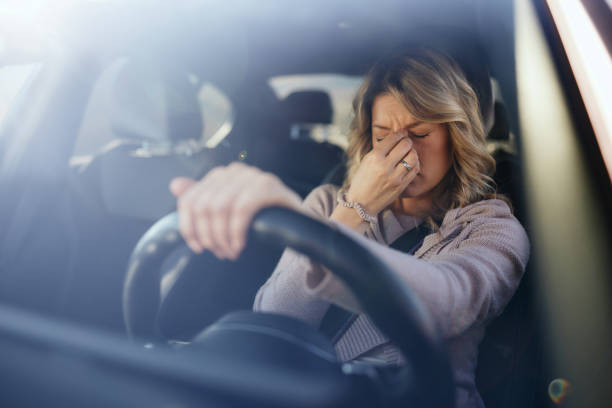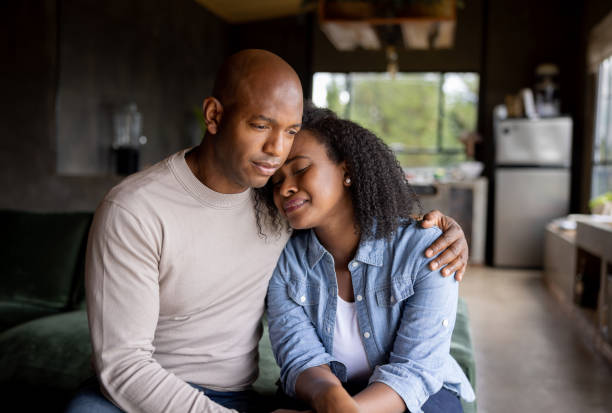Fear of driving is a common and often misunderstood symptom for individuals living with Obsessive-Compulsive Disorder (OCD). While driving anxiety can exist for many reasons, in the context of OCD, it’s usually fueled by intrusive thoughts, perfectionism, or a deep fear of causing harm. This fear can make even a short drive feel terrifying—but with support and tools, it’s possible to regain confidence behind the wheel. We address fear of driving in our Woodland Hills OCD therapy sessions; if you are struggling with this fear, you are not alone. There is no reason why a person who has OCD cannot confront intrusive thoughts that lead to a fear of driving and be a successful commuter!

What is Fear of Driving, also Known as Vehophobia or Amaxophobia?
In OCD, fear of driving often isn’t just about physical danger—it’s about intrusive, irrational thoughts that feel very real and distressing. These thoughts may center around the fear of harming others, losing control, or making an irreversible mistake. They can also co-occur with a need for structure and routine that impacts those with Autism Spectrum Disorder, as OCD and autism coexist in a large number of people. To cope with these fears, individuals may avoid driving altogether, repeatedly check mirrors, or seek reassurance after every trip.
Common Driving-Related OCD Fears and Behaviors:
- Fear of hitting someone without noticing. However irrational a fear might seem, the thought can occur out of nowhere and persist.
- Intrusive thoughts about losing control of the car (through human error or mechanical failure).
- Avoidance of certain roads, highways, or intersections. Getting stuck in a routine of routes that are known, or less busy.
- Avoidance of driving alone and only driving when with a trusted passenger.
- Compulsive checking (rearview mirror, news reports, walking back to “make sure” nothing happened).
- Refusing to listen to music/podcast when driving to minimize distractions. While distracted driving is hazardous, this fear extends to a point of being detrimental.
- Seeking reassurance from passengers or loved ones while driving. This can lead to a fear of driving alone.
- Ruminating after driving: “What if I hurt someone?” “Did I check enough?”. Being unable to let go of these worries can be very difficult.
3 Tools to Help Manage Driving-Related OCD
1 – Identify the Thought-Compulsion Cycle

It isn’t fair or helpful to expect yourself to be able to address and tackle your fear with a broad statement like, “I have a fear of driving.” In order to confront the issue, it is important to know how and when it strikes, what occurs when it does, and how to adjust your behavior in a way that benefits you.
- Know the pattern. OCD creates a loop: intrusive thought → anxiety → compulsion → temporary relief. Because the temporary relief occurs, you can get caught in thinking that the loop is being managed. In actuality, the fact that the relief is temporary is part of the problem. It will leave your repeating cycles and patterns over and over again without being able to free yourself of the imposition of your driving-related OCD.
- Take note of impulses and compulsions. Recognize when you’re engaging in checking or avoidance behaviors and label them as part of the OCD cycle. This isn’t a perfect science, so don’t expect it to be. Take note when you can and clock it without judgement. Being able to notice these moments can help you to pause before engaging in a compulsion. When you pause, you can address what is happening, and choose a different response.
- Address your behavior directly. Name what is happening and respond to it. Example: “That urge to turn around and check? That’s OCD, not reality.” Even if you don’t truly believe yourself when you say that it’s not reality, even if it takes some practice, pushing back against your thoughts and compulsions allows you to be proactive with how you react to them.
2 – Use Exposure and Response Prevention (ERP)
I know the value of Exposure and Response Prevention as an OCD counselor in Woodland Hills. ERP will help you to confront your triggers and adjust your behavioral response to them in a safe environment. It requires self-reflection and insight, as well as patience with yourself to practice.
- ERP is the gold standard for OCD treatment. It involves gradually facing feared situations (like driving) without engaging in compulsions. Learning how to manage your OCD triggers is an ongoing process. It is through exposures that you can acclimate yourself to them and lessen their impact on your nervous system. Some OCD triggers are super specific, like a certain object or location. Others are more broad, such as the idea of driving in general. This can impact how you approach exposures, but there is always a strategy for any given trigger.
- Implement exposures when and where you can. This could look like: driving short familiar routes without checking afterward, and increasing distance over time. It might involve driving on your own more often, or allowing yourself to listen to music. When you begin, these drives may take place over short distances. Taking exposures one step at a time and working on them bit by bit is about progress and consistency. Do not bully yourself about your steps, or expect improvement in a straight line. Instead, focus on your efforts overall and be patient with yourself.
- Find and lean on your support system. Working with an OCD-informed therapist can make this process safer and more effective. In therapy, you may imagine scenarios to address triggers to begin with, before moving on to confronting them in real life. There may be some triggers that are only safe to imagine and work through in therapy; it can help to do so. When partaking in Exposure and Response Prevention therapy, you will often come across emotions that feel overwhelming. Being in a safe environment, where you can process your emotions, talk about your feelings, and unpack what comes up with your therapist will help you through the process.
3 – Ground in the Present Moment

Grounding yourself in the present moment is something you may be familiar with if you partake in in-person or online OCD therapy. Being connected to what is happening in real time can help you to shut down ruminating about the past or catastrophizing about the future.
- When intrusive thoughts strike, anchor yourself.
- Name 3 things you see, 2 things you hear, and 1 thing you feel. Utilizing your senses to ground yourself in the present moment works very well. When you are in a moving vehicle, the thing you can feel will typically be your steering wheel. Holding onto it with both hands firmly but not too hard is a great way to ground yourself. Listen to the radio, your own breathing, or someone who is in the vehicle with you. If you are stopped, you may roll down your window and listen to traffic noise, or birds chirping. If you are driving, the things you see can include the car in front of you, the meridian, or exit sign up ahead. You can focus on your senses while still focusing on the road.
- Breathe slowly and remind yourself: “This is my anxiety talking—not evidence of danger.” Connecting with your breath and breathing deeply can help your nervous system to relax, and to remind you that you are connected to your body. Often, when our thoughts begin to spiral, we can feel as though our mind has run away with us and lose track of where we really are and what we are doing. Reminding yourself that you are in your body can help rein your thoughts in as well.
- Find your talisman (of sorts). Keep a calming object in the car (like a small stone or scent) as a reminder to stay grounded. You may hold or smell it, using your sense of touch or scent as an anchor. It may remind you of every other time it’s been in the car with you and nothing bad happened. Your calming object can be whatever you want it to be, as long as it’s safe to have with you on the road.
Key Takeaways

- Fear of driving in OCD is often driven by intrusive thoughts and compulsions—not actual risk.
- Avoidance and checking might feel helpful in the moment, but they strengthen the OCD cycle.
- Real progress comes from facing the fear gradually and with support.
- Bullying yourself about your fear of driving, or telling yourself to “just get over it”, won’t help you address the issue. You are not the only person who struggles with this fear, and you are deserving of the support that is available.
- The therapeutic methods that work for those who see us for OCD Therapy in Woodland Hills can be beneficial in dealing with a fear of driving as well as other OCD triggers and compulsions.
- Exposure and Response Prevention therapy can help you confront your triggers and adjust how you respond to them.
OCD Treatment in Woodland Hills
OCD is more than repetitive hand-washing or checking locks—it can impact your relationships, driving, and even your experience during postpartum. Understanding the OCD cycle is key to making meaningful changes and regaining a sense of control. Our OCD specialist in Woodland Hills—or virtually—offers targeted treatment using Exposure and Response Prevention (ERP), Cognitive Behavioral Therapy (CBT), Acceptance and Commitment Therapy (ACT), and mindfulness-based strategies to help you manage symptoms and improve your quality of life.
Contact us today for your complimentary 20-minute phone consultation with our Admin Team today



